|
By Victoria Hamilton A decade or so ago horses with certain traits would have been classified as hard to fit by riders and saddle fitters alike. But new research and technology has allowed world-class saddle makers to develop a good range of saddles for all horses, regardless of their physical traits. There can be more limited options available for some traits and/or horse and rider combinations, but it is improving all the time. And while custom-made saddles can be a brilliant option for some of the more challenging cases, there are also plenty of off-the-shelf saddles that are now well suited to many situations. Find out what traits make a horse more challenging to fit, signs your horse has one or more of these traits, the impact this can have on saddle fit and most importantly, what you should be looking for in a saddle to ensure the comfort and performance of both you and your horse. Wide flat-backed horses Why are wide flat-backed horses more difficult to find a saddle for? Ill-fitting saddles on wide flat-backed horses can create pressure points in various areas, restrict movement through the shoulders and result in the saddle slipping forwards or sideways on the horse. This can result in unwanted behaviours such as bucking, bracing, resisting and refusing to go forward. It can also have a serious impact on the position and security of the rider. When looking for a saddle, riders should consider the shape and flexibility of the tree, and the angle of the rails. Back panels should be looked at closely as flat-backed horses may require shortened back panels or raised up stitch-lines to alleviate pressure in this area, particularly if the horse has a short saddle platform area or highly developed loin muscles. What is the best saddle for a wide flat-backed horse? The most suitable saddle for a wide flat-backed horse depends on the shape and size of the horse’s withers, as some wide horses have little or no wither while others have a very pronounced wither. Discovery saddles come in two totally different tree types which are both adjustable from medium to extremely wide. The WB tree is suitable for the flatter backed horses and the TB tree for horses with more shape in their backs, making Discovery a great choice for either type. Jeffries also have trees that vary in flatness and angle of the rails, with the Liberty and XP trees suitable for flatter backed horses. The Ryder Baroque, Excellence, Legacy Ultra, and Zara are also an excellent choice with flatter trees than the Molineux and the Panamera. VH Saddles were designed specifically for wide flatter-backed horses, making them ideal for these types. Short-Backed Horses Why are short-backed horses more difficult to find a saddle for? Short-backed horses can have issues with the saddle being too long, and therefore extending too far along their backs. Some horses will be strong enough to shift the saddle forwards over their shoulders, particularly if they are also downhill, have low withers or a forward girth groove. This can cause the saddle to sit too high in front, pushing the rider too far to the back and putting pressure to the back of the saddle. The saddle may also move from side to side as each shoulder pushes it diagonally. The same problem can occur with long-legged riders that require longer saddles so they can sit in the centre and achieve balance. In this case even a horse with a reasonable length of back can have issues with the saddle extending too far back. On the other hand, a short-legged adult or child may not have any issues on a short-backed horse as they only require a short seat… so it really is all relative. A saddle extending too far back on the horse can seriously affect the way in which they use their backs. All horses will react differently in this situation but some signs to look out for include bucking, bracing and/or resisting (particularly in transitions and on turns), irregularity in lateral work and disuniting in canter. What is the best saddle for a short-backed horse? Riders with long legs or those riding short-backed horses should be looking for saddles that are more forward cut in the flap, with an open seat and moveable knee rolls (particularly if thinner or shorter knee rolls are used). This will give the rider more room in the saddle without requiring the extra length on the horse’s back. VH Signature Saddles and Ryder Saddles are custom-made to fit any rider and horse combination perfectly making them an ideal choice. The VH Baroque saddle, the Ryder Baroque, the Ryder Zara, The Ryder Molineux and the Ryder Excellence are fantastic in these situations, the choice being dependant on rider preference and horse back shape. Some have straighter trees whereas others are more curvy. For those looking for an off-the-shelf option, Discovery Saddles are super for short-backed horses and have several adjustable features designed to give the rider more room in the saddle. Horses with Big Shoulders and/or Forward Girth Groove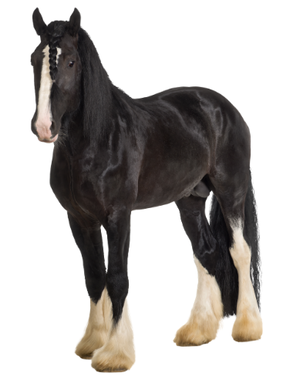 Why are horses with big shoulders and/or a forward girth groove more difficult to find a saddle for? Horses with big shoulders often also have a forward girth groove, which can be even more problematic than the shoulders. Poorly fitting saddles on these horses can cause shoulder pressure and restriction, poor rider balance in the saddle and movement of the saddle. This can result in the saddle moving over the horse’s shoulders which at best will cause them to become less forward and not as uphill in their movement but may also result in bad resistance and complete refusal to move forward. Sometimes when saddles hit the horse’s shoulders, they can start to move from side to side at the back, or can sit too high in front, forcing the rider too far back in the saddle, which creates poor balance and security for the rider and pressure on the horse’s back, leading to other unwanted behaviours such as bucking. When placed in the correct position on the horse, a suitable saddle allows the girth straps to hang perpendicular. If the straps must be pulled forward to girth up, the saddle has no hope of staying back off the shoulders, and this is often the first clue of an ill-fitting saddle on a horse with these traits. What is the best saddle for horses with big shoulders or forward girth grooves? Riders should be looking for saddles designed to alleviate shoulder pressure and restriction, which has a lot to do with the tree points and front panels. Some saddles, such as the VH Signature Saddles, have the tree point angling backwards, allowing for greater shoulder freedom but resulting in the girth points being further back. While this design is very effective, it is essential these saddles are placed and balanced correctly because if the whole saddle is behind the shoulder, not just the tree point, they will never stay in position. Therefore, it is so important your saddle fitter is either extremely experienced or knowledgeable on the brand you choose. There are also saddles that do the complete opposite, with tree points that flare out and angle forwards, allowing the shoulders to move freely whilst also enabling the girth straps to be very forward, hence keeping the saddle off the shoulders. Discovery saddles with the WB tree and Max Benz One saddles are examples of such saddles. Max Benx One saddles also feature a uniquely shaped front panel, allowing the horse’s soft tissue more room, but still providing excellent support for the moveable knee roll. Yet another unique solution can be found in the Ryder Baroque saddles which were developed specifically for the Friesian horses and have short tree points which are then flexible. Downhill Horses Why are downhill horses more difficult to find a saddle for? Horses can be downhill because of conformation or age, but some horses may move downhill due to pain or training. For example, sore front feet can change the way a horse moves biomechanically, and they can travel on the forehand, as can horses that have been incorrectly stretched down in their work. Downhill horses and those with low withers can be challenging to ride as they can tip the rider forward in the saddle, creating issues like poor balance and instability. Poor fitting saddles can also slip forward, impacting the movement of the shoulders, creating pressure points, and leading to behaviours such as resistance and refusal to move forward. What is the best saddle for a downhill horse? Many horses that have travelled downhill for some time completely change the way they move when in a different saddle. Trying many different saddles on a horse through a saddle trial or consultation can paint a picture as to what the horse does and doesn’t like about various parts of the saddle. Sometimes it is pressure directly applied by the saddle to the horse, but often it can be how the rider sits in different saddles, with rider position making an incredible difference to the horse. The ideal saddle depends entirely on the rider’s preference and the shape of the horse’s back, with tree, gullet width, girthing options, panels and gussets all considerations. But saddle stability and balance are of utmost importance in all situations and Discovery Saddles excel in this area. With a choice of a flatter or a more shaped tree, changeable gullets and incredible girthing options, they are a suitable fit for almost every shape of horse. Custom-made saddles including Ryder Saddles and VH Signature Saddles are also good for horses as the balance of the saddle can be perfected by selecting different front and back panel and gusset options. YOung Horses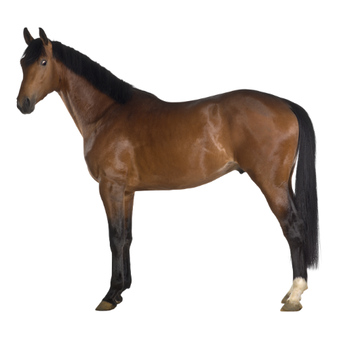 Why are young horses more difficult to find a saddle for? Young horses are going to develop and change, with breed, workload and age all impacting on the amount of change you can expect. A saddle that fits a horse perfectly as a youngster may be completely unsuitable down the track, which creates an issue from a financial point of view. What is the best saddle for a young horse? Riders should be looking at saddles with changeable gullets for horses under 5 years of age, as they can be changed at any time and over a large range of sizes as your horse develops. Other considerations are the adjustability of the panels and gussets. Discovery Saddles and Max Benz One saddles are both great options offering changeable gullets and generous panels and gussets, allowing a lot of adjustments to be made through flocking by your saddle fitter. After 5-6 years of age, and depending on breed and development, custom-made saddles such as the VH Signature Saddles and Ryders Saddles are a perfect option. These saddles can be pressed in or out 1 size either way by a saddle fitter, 3-4 times throughout the life of the saddle, which along with their wool-flocked panels, allows for great adjustability. Horses with Shark-Fin Withers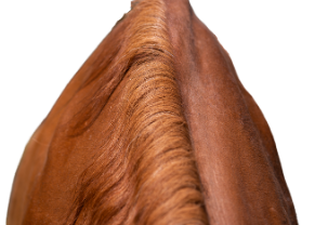 Why are horses with shark-fin withers more difficult to find a saddle for? While horses with high shark-fin like withers that extend a long way back may be born with this conformation, sometimes it can develop this appearance due to muscle atrophy. They will show different signs of an ill-fitting saddle depending on where the pressure is located. If there is no clearance on the top of the wither the horse may resist all the time and not be happy to work over its back. If there is not enough clearance laterally then sometimes on a straight line, they are ok, but when turning or when the rider’s weight moves laterally, they may resist or break gaits. This is particularly evident when going from straight lines to circles in the canter or in changes of direction. Riders can check for lateral clearance by putting their fingers in between one side of the horse’s wither and the saddle whilst sitting straight. If their fingers get squashed when shifting their weight to the opposite direction, then there is not enough space between the saddle and the horse’s wither. Even subtle movements can result in no room between the saddle and horse’s wither. Saddles can also move backwards if not balanced correctly on a horse that is also built uphill. What is the best saddle for horses with shark-fin withers? There are many options for these horses, depending on the width, length, and shape of the horse’s back. But riders should consider the gullet width and tree shape for wither clearance, and back gussets for balance. Jeffries Saddles’ Xtra tree is specifically designed for these horses, but the Jeffries Sport is also very suitable. Max Benz One saddles offer changeable gullets and excel in wither clearance, especially laterally, and they also feature generous back gussets to help with balance. Discovery TB tree saddles are another great option, with the shaped tree and changeable gullets offering superior fit. Ryder Zara and Ryder Molineux are also well designed for horses with shark-fin withers, with the best choice between the two dependant on the shape of the horse’s back. Horses with Atrophied Back Musculature Why are horses with atrophied back musculature more difficult to find a saddle for? Muscle atrophy is defined by muscle loss, with many possible causes including a recent ill-fitting saddle, past injury or illness, or past poor training. It becomes obvious when you can see a depression where the saddle sits and where the muscle should be. It can cover the entire saddle area or be limited to the wither area or where the back panels of the saddle sit. The area where the depression occurs offers a clue to where the pressure of the saddle is greatest and the reason for the atrophy. Many unwanted behaviours can result depending on the severity and location of the atrophy. What are the best saddles for horses with atrophied back musculature? Depending on the horse’s age and the severity of the atrophy, a correctly fitted saddle can improve the atrophy over time, which must be taken into consideration when selecting a new saddle. The most suitable saddle for a horse with atrophied back musculature will depend on the reason for the atrophy, so history is very important. The horses age, workload, nutrition, and the rider’s expertise are also important considerations. Panel design and wither clearance are among the things to look at in a saddle for these horses. Max Benz One saddles excel with these horses due to their incredible panel design, maximising the weight bearing surface without impending any important structures. They also have super clearance around all aspects of the wither, which is often a very problematic area for horses with marked atrophy. With Discovery saddles’ changeable gullets and two tree options, they are often well suited, with the best tree dependant on the location of the atrophy. Custom-made saddles such as the VH Signature and Ryder range of saddles are a huge advantage because not only is the tree made to measure, but the panels can also be made to whatever depth is required, so extra flocking can be put in to make up for the loss of musculature and removed when the muscle re-develops. It is sometimes necessary to wait and do some in-hand work to build up the muscles before selecting the best saddle, particularly if there is severe atrophy and a custom-made saddle is being purchased. VH Saddlery are specialists in finding solutions for horse/rider combinations and horses that are more challenging to fit. As a veterinarian, international competitor and dressage coach, Victoria has a wealth of experience in equine anatomy and rider biomechanics, which she uses to help riders work out the underlying causes of their saddle and riding woes. If you feel as though your saddle may be affecting your horse or your own balance and security, and need some advice, please contact us. We would love to help.
0 Comments
Leave a Reply. |
AuthorDr Victoria Hamilton is an icon in the Western Australian Equestrian Community, with a wealth of experience as a veterinarian, coach, breeder and international dressage competitor. As one of Australia’s top dressage riders, her love of horses is contagious and apparent in everything she does. Archives
February 2024
CategoriesFollow Us |
Photo from Sean MacEntee

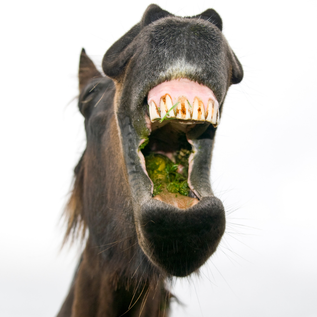
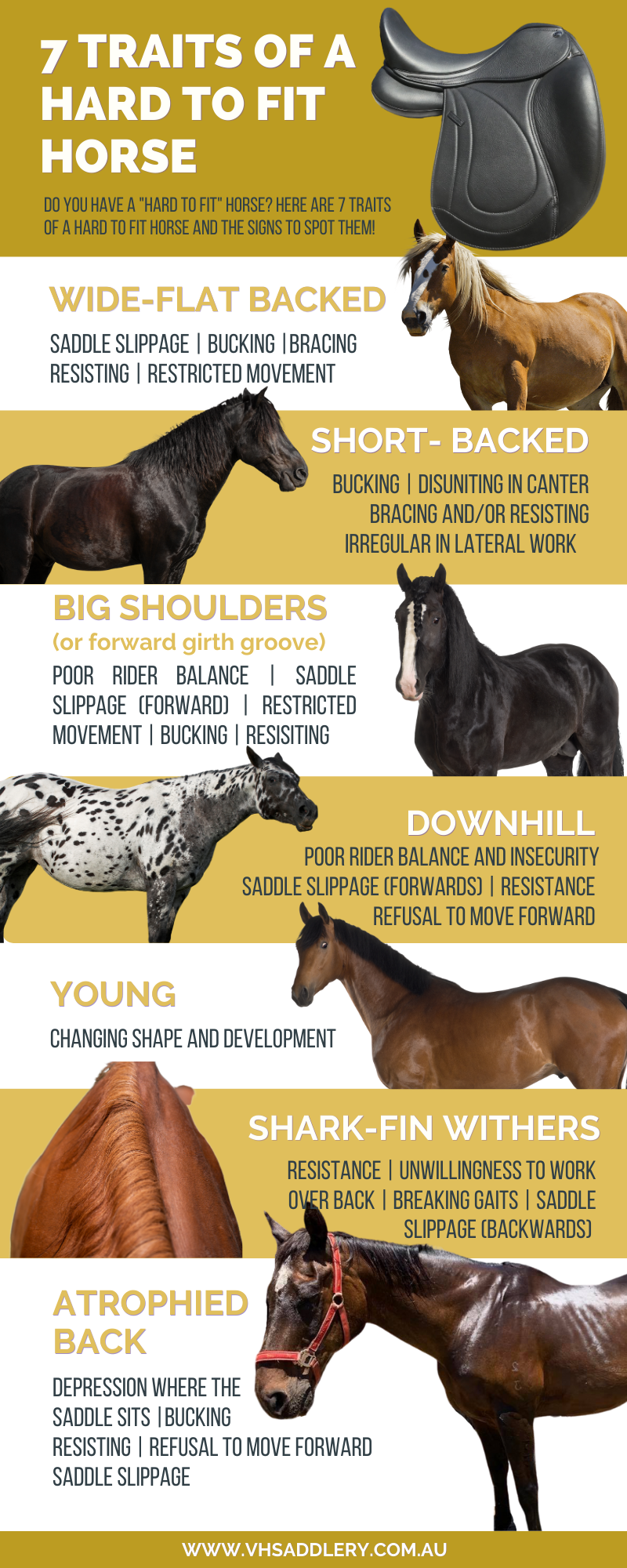
 RSS Feed
RSS Feed